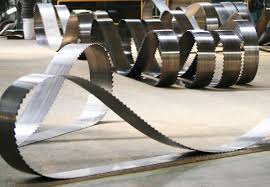Tech News
3 Aspects of Caster Design
Casters are an important part of many commercial and industrial applications. They give the ability to support loads for safe and efficient transport from one place to another. The selection of a caster should not be considered an afterthought. One that works in an industrial setting may be terrible for a commercial or office area and vice versa. Here are some basic design aspects and how they have an effect on function.

Mounting Type
Casters can be mounted to the main body in one of two ways. The first is called a swivel caster. Most people are probably familiar with these on shopping carts. The caster housing is capable of rotating in any direction which means it can be turned or pushed easily in any direction. The other mounting type is a fixed design. There is no capability to swivel and the caster is only able to go in either the forward or backward direction.
Wheel Design
Wheels are a component of a caster itself. The bracket legs typically extend down on the outside of the wheels and are fastened through the center of them. Several things play a role in how the caster behaves. One is the wheel diameter. The larger this dimension is, the easier the item will roll. However, this also contributes to the overall height which also needs to be considered. Single wheels are more economical but can be more difficult to maneuver on rough surfaces. Dual wheel shock absorbing casters provide maximum load capability with the least overall height, in addition to excellent vibration resistance.
Wheel Type
In addition to the dimensions, there are other factors of wheel design that play a role in usability. The material that wheels are made of is an important consideration depending on the application. They can be made out of metal, rubber, nylon and polyolefins. Softer materials will be quieter and do less damage to sensitive surfaces. Harder ones will provide more durability.






